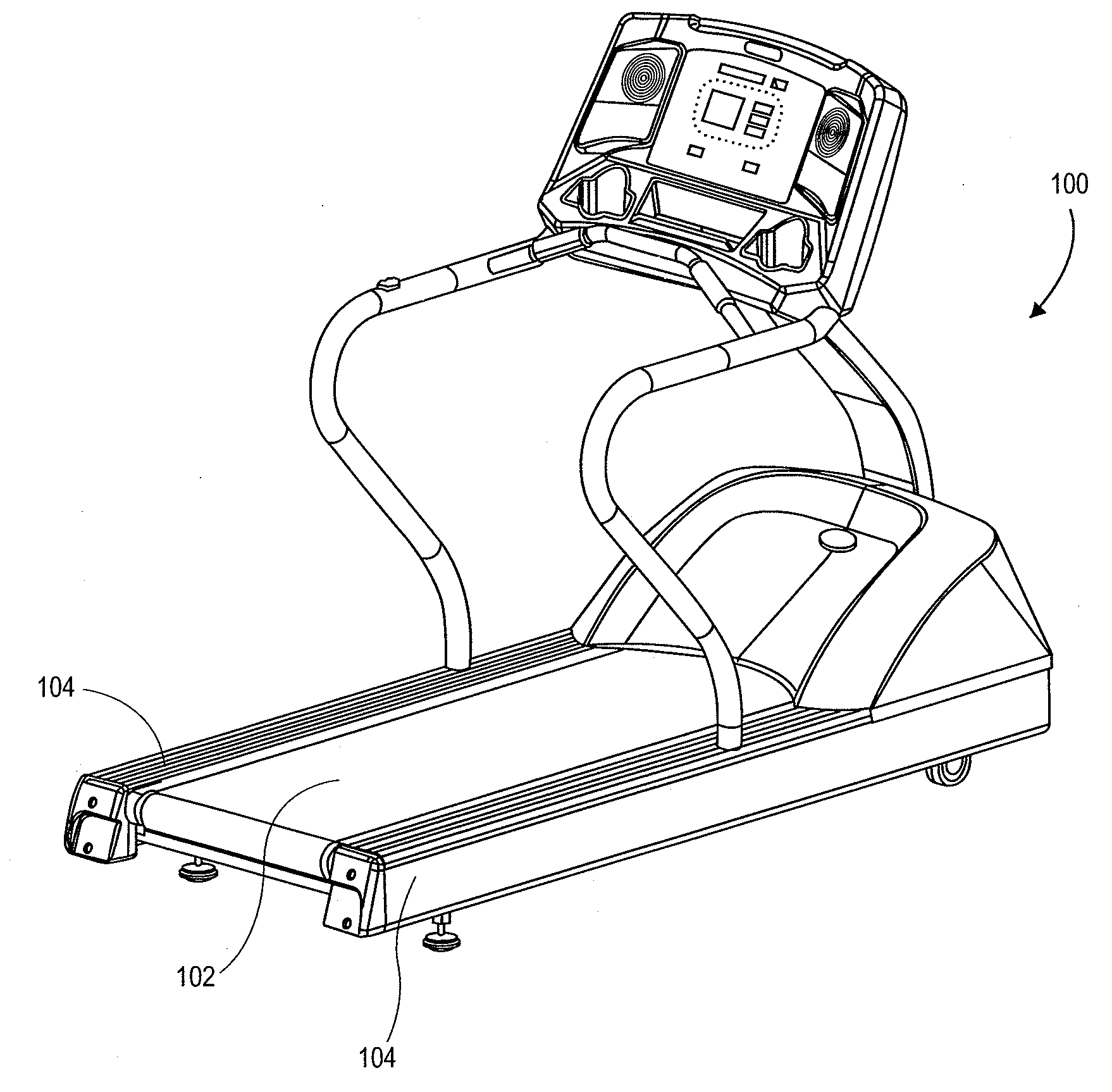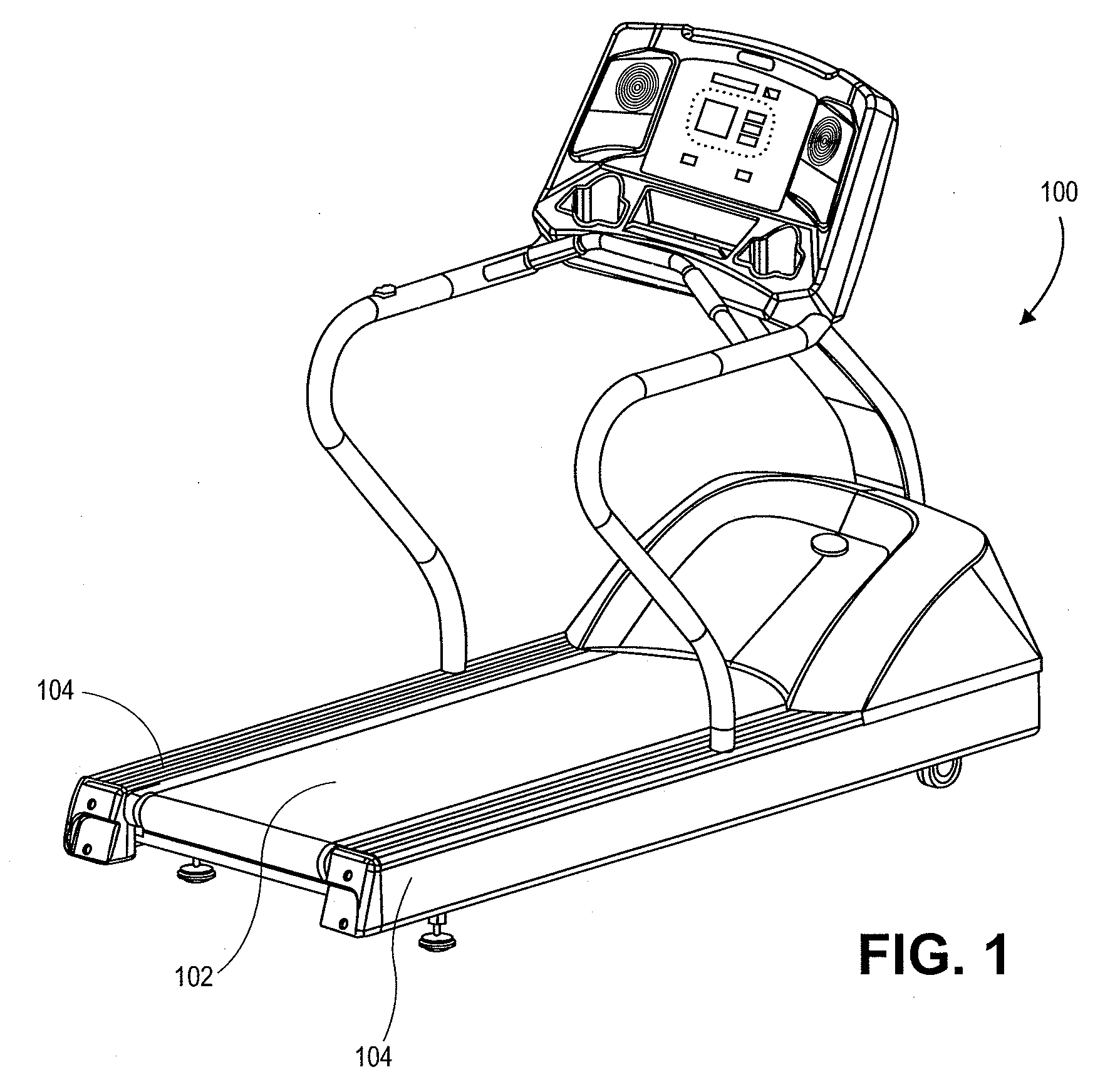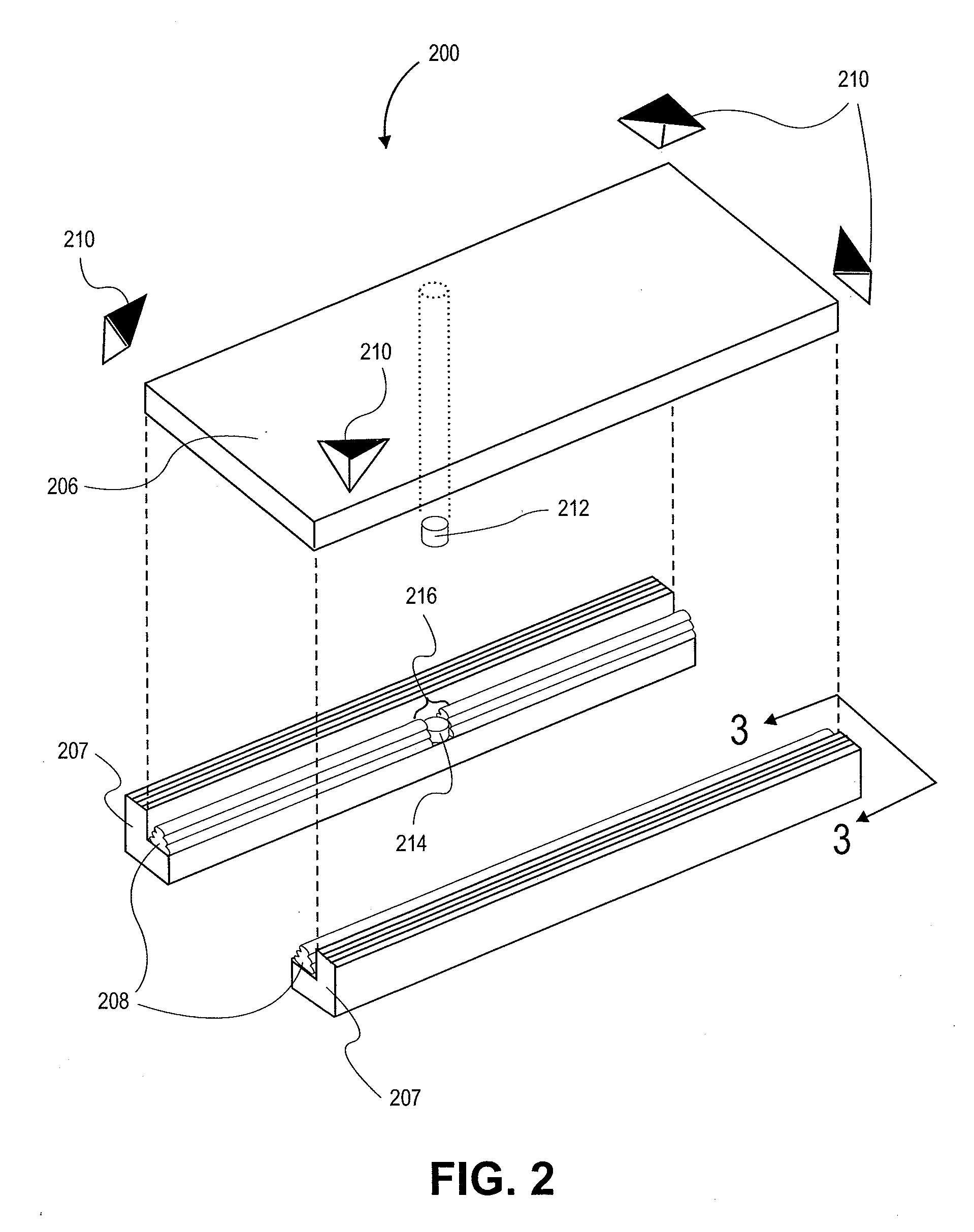User detection for exercise equipment
a technology for exercise equipment and users, applied in the field of exercise machines, can solve the problems of inaccuracy, affecting the accuracy of user detection, and the need for the belt to move, so as to prevent or reduce injuries, diagnose and correct running or walking form problems, and accurate detection of force and/or cadence of user's footfalls.
- Summary
- Abstract
- Description
- Claims
- Application Information
AI Technical Summary
Benefits of technology
Problems solved by technology
Method used
Image
Examples
Embodiment Construction
[0025]As stated the detection of a user's presence on exercise equipment can provide a number of benefits, including safety, power savings, motivation, training, and the like. A user detection system for exercise equipment, such as a treadmill will now be described with reference to the figures. FIG. 1 illustrates an exemplary treadmill 100, including a base 104 with a frame positioning two rollers stretching an endless treadmill belt 102 for exercising users. Within a loop formed by the treadmill belt 102 resides a generally resilient deck surface, preferably with a low coefficient of friction between the surface and the belt 102 that allows the belt 102 to glide over it while in use. In an embodiment, the deck may be any shape including flat, concave or the like. In an embodiment, a deck may advantageously be “floating” within a constrained space that in an embodiment is defined at least in part by the treadmill frame. In this type of floating support deck, a user exercising on th...
PUM
 Login to View More
Login to View More Abstract
Description
Claims
Application Information
 Login to View More
Login to View More - R&D
- Intellectual Property
- Life Sciences
- Materials
- Tech Scout
- Unparalleled Data Quality
- Higher Quality Content
- 60% Fewer Hallucinations
Browse by: Latest US Patents, China's latest patents, Technical Efficacy Thesaurus, Application Domain, Technology Topic, Popular Technical Reports.
© 2025 PatSnap. All rights reserved.Legal|Privacy policy|Modern Slavery Act Transparency Statement|Sitemap|About US| Contact US: help@patsnap.com



